 |
RENAULT 4 FROM JAPAN |
 |
 |
RENAULT 4 FROM JAPAN |
 |
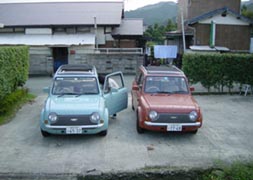
From this angle, they look very similar.
![]()
Nissan ceased to make retro cars after the Figaro of 1991. However independent firms in Japan continued to make lookalikes of European classics, mostly based on the second generation Nissan March. These included a bizzare Micra-based Jaguar MkII lookalike, a Wolseley Hornet, a Austin-Morris 1100, a Corolla-based Jaguar XJ and a Renault 4.

The March Rumba from Autech: It's front end appears to be inspired by the sixties Renault 4. The
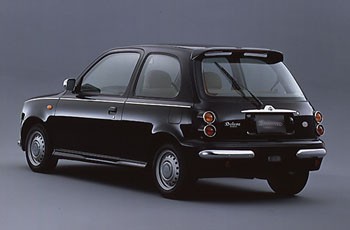
The rear aspect
![]()
Dream Automobile Marketing & Development, an independent Japanese firm which produced cars for "The Fast and the Furious" and "2Fast 2Furious" has worked its magic to produce another lookalike. This reworked Suzuki Lapin appeared in 2002.
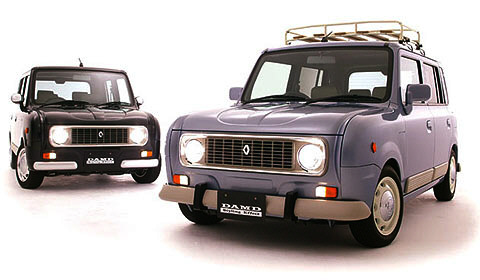
Bearing in mind the fact that it is based on a modern hatchback, it is an incredibly faithful. It could easily be mistaken for the real thing at first glance. The colour of the car on the right is very similar to the ozone blue of many of the last series R4s.
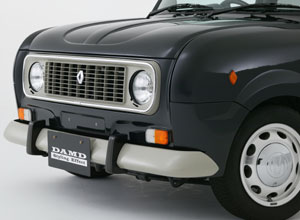
The diamond-shaped side repeater is an original Renault part, as are many of the other parts.
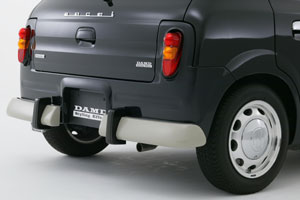
When the original car was introduced as a concept in 2001, comparisons were made between it and the Renault 4 in the French Car press. The production version was even more similar. 'Lapin' is the french for rabbit, and is surely an indication that the car drew its inspiration from the Renault 4. This look-a-like may not have the design merit of the Nissan Cube, but it shows that the Renault 4 has a following and it is great news for Renault 4 fans. Thanks to Peter Gumbrell webmaster of Renault Fourplay for passing on this information and these pictures.
![]()
When Nissan ran into financial trouble in the late 90's, Renault stepped in and took a controlling interest. Carlos Ghosn (he of Renault) set about restructuring the company for profitability, and taking the cars' design in a dramatic new direction, visible in the new 350Z, Micra, Primera and Evalia. However one of the first projects he instigated was the replacement of the unprofitable Nissan Cube of 1998. The final product of this was launched in 2002. It proved a hit, and so much so that there is a waiting list. Although intended for the home market only, the motoring press and dealers alike have rallied Nissan to bring it to Europe and North America, however this did not happen. I personally see a lot of Renault 4 in the design:

Its shape was designed for maximum interior space, just like the Renault 4. It is only three inches longer than the BMW MINI, yet it packs in acres of space. I think the styling is genius, especially when placed alongside the likes of the Toyota Scion, the Daihatsu Move, and the Hyundai Atoz. Interestingly, the Cube's platform will also underpin the replacement of the R4 replacement, the Twingo.

The front treatment is unmistakably Renault 4. The grille with its rounded-off rectangular shape and inset round headlights is easy to recognise. Also the registration plate between the auxiliary lights, and the way the flat bonnet slopes just before it reaches the grille.
Unfortunately, instead of bringing the Nissan Cube to Europe, Nissan decided to bring the Note (which is almost identical to the Renault Modus).
![]()